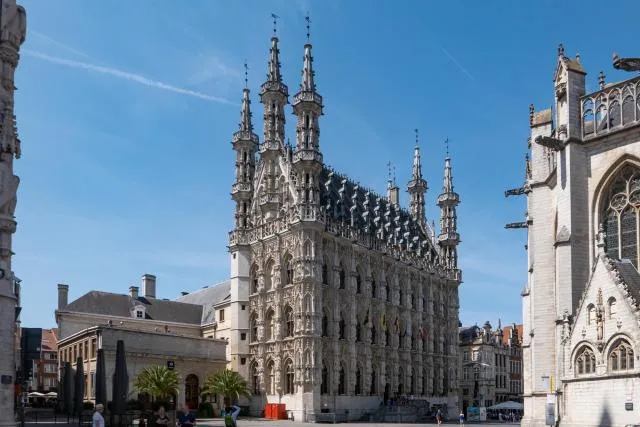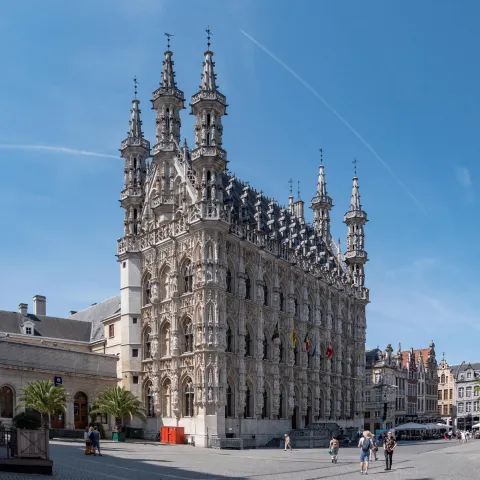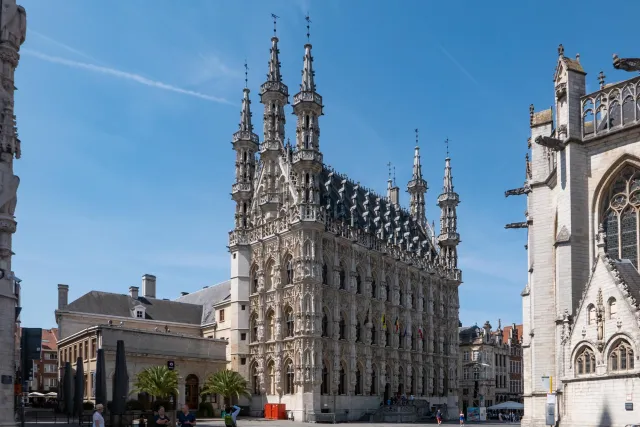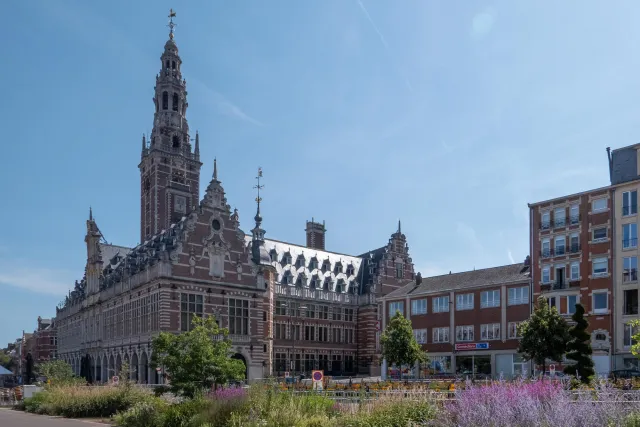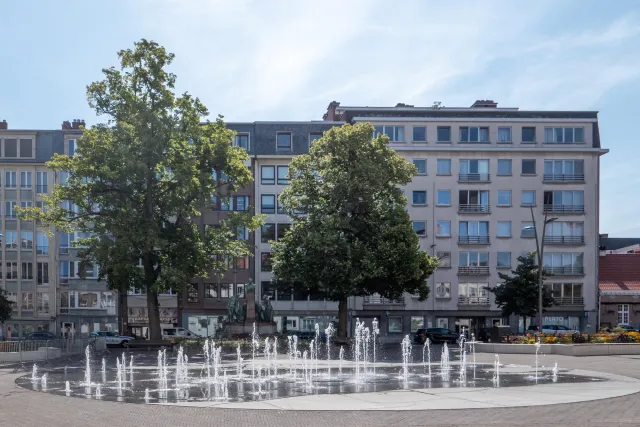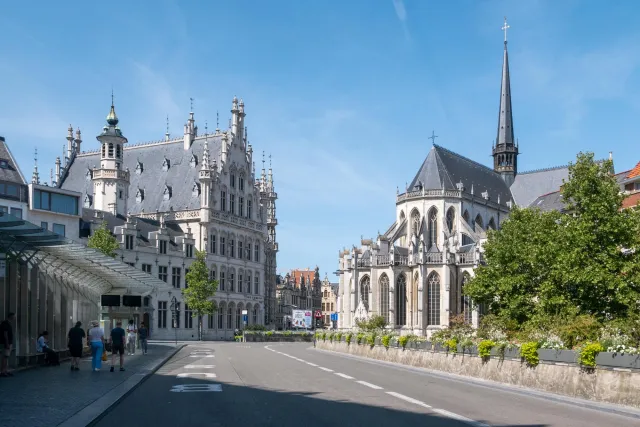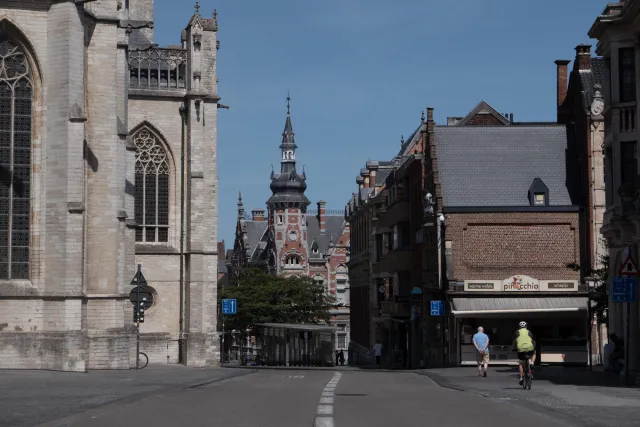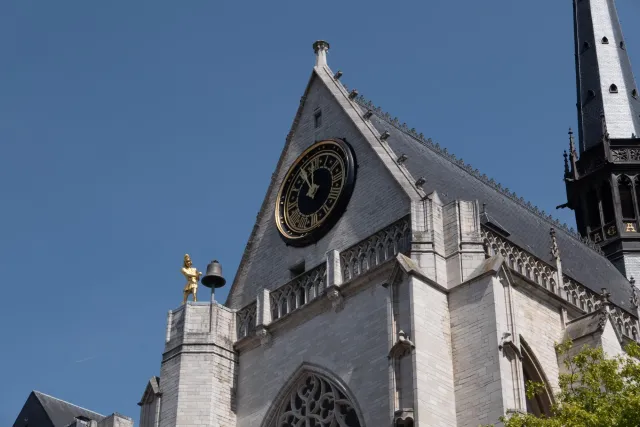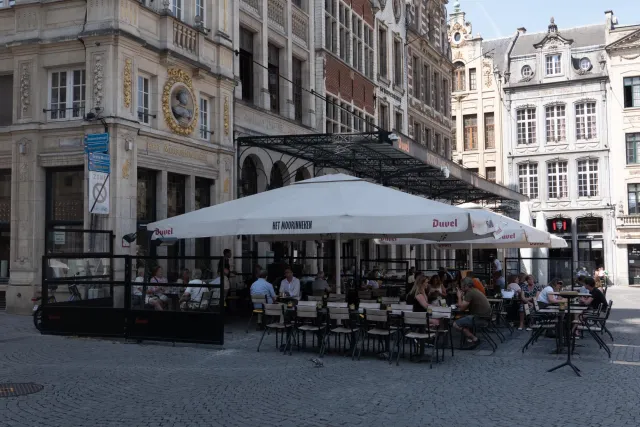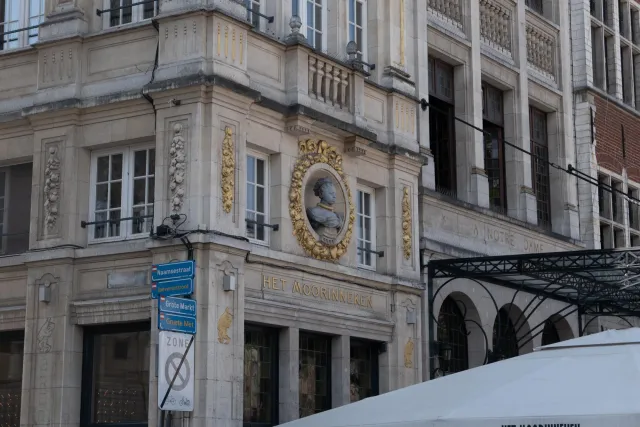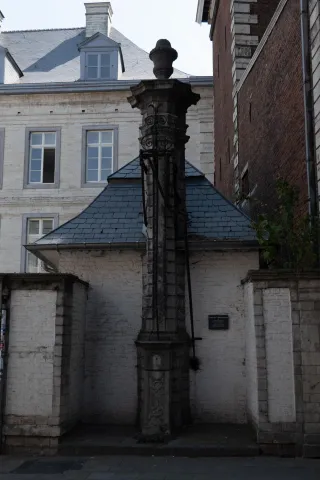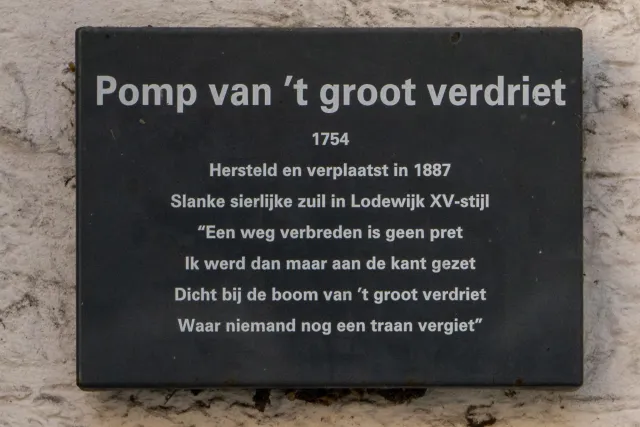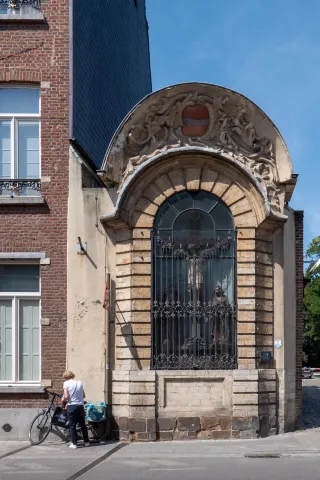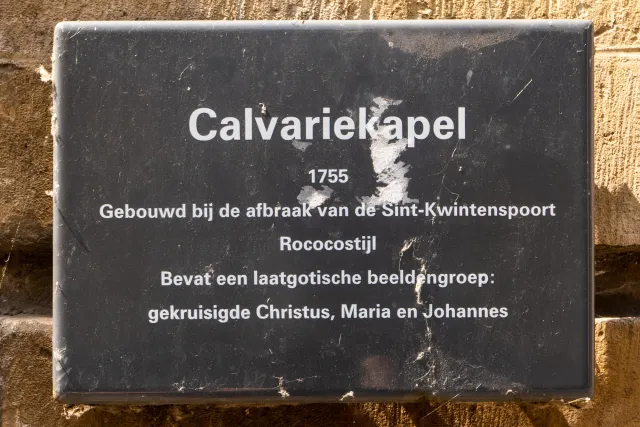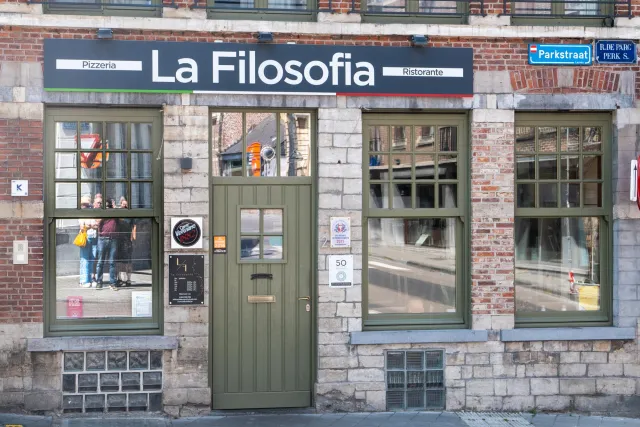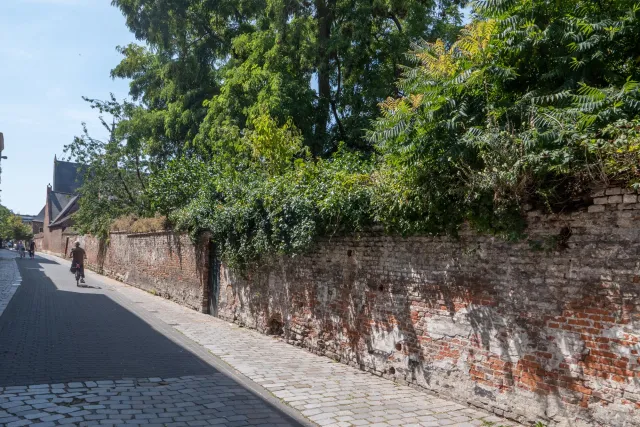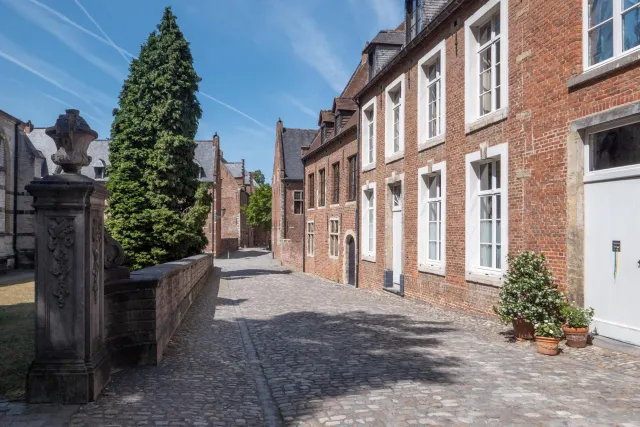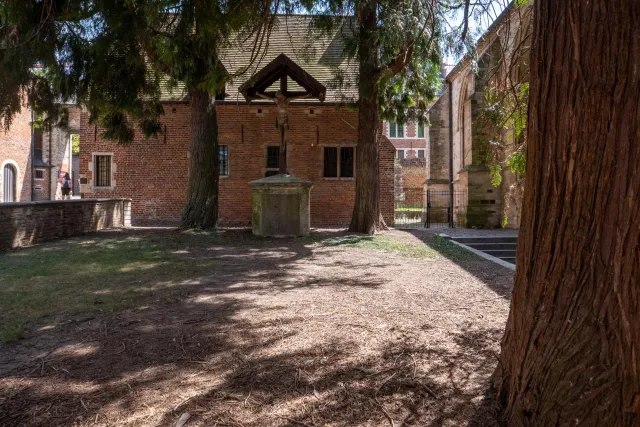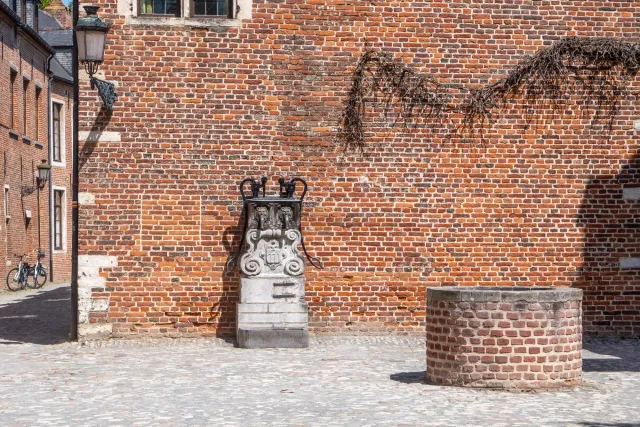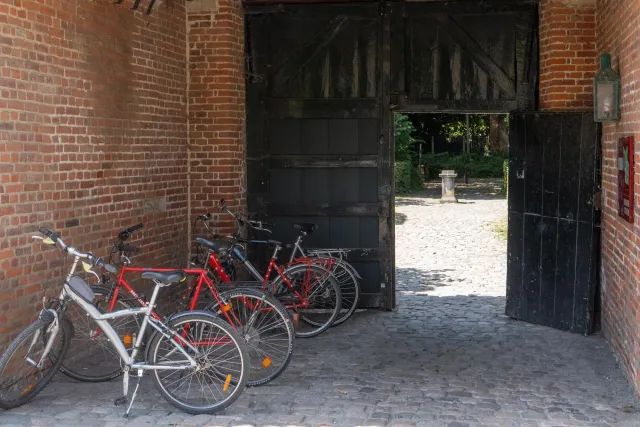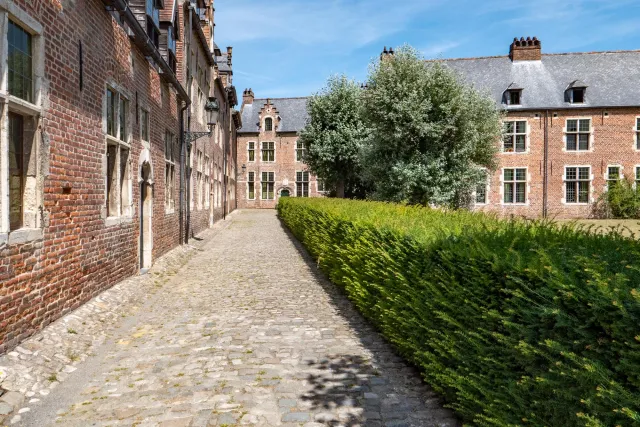A tour of Leuven offers many surprises - small as well as big. Of course, the town hall on the Great Market is impressive and is one of the most beautiful late Gothic buildings in Europe. It is decorated with hundreds of figures depicting biblical scenes as well as scholars and important figures in Louvain's history. It was built from 1439 to 1468 and stands directly opposite the St. Peter's Church.
The short film at the end of this article shows the carillon of the St. Peter's Church at noon. If you stroll south, you can briefly marvel at a "Sad Water Pump" and vis-a-vis a small Roccoco chapel and fortify yourself with a philosophical pizza before you reach the Great Beguinage, which is a UNESCO World Heritage Site.
At the St. John the Baptist church inside the complex, a plaque gives the year 1234 as the founding date, which is easy to remember. The farm originated as a community for unmarried lay women (beguines) who led a religious life here. Religious lay communities such as beguines and begarden existed in many parts of Europe well into the 20th century. The life ideal of the beguines was based on Christian ideas of poverty and penance, and they carried out charitable activities for the poor, the sick and the dying. The Dijle flows through the Beguinage in Leuven and splits into two arms here.
